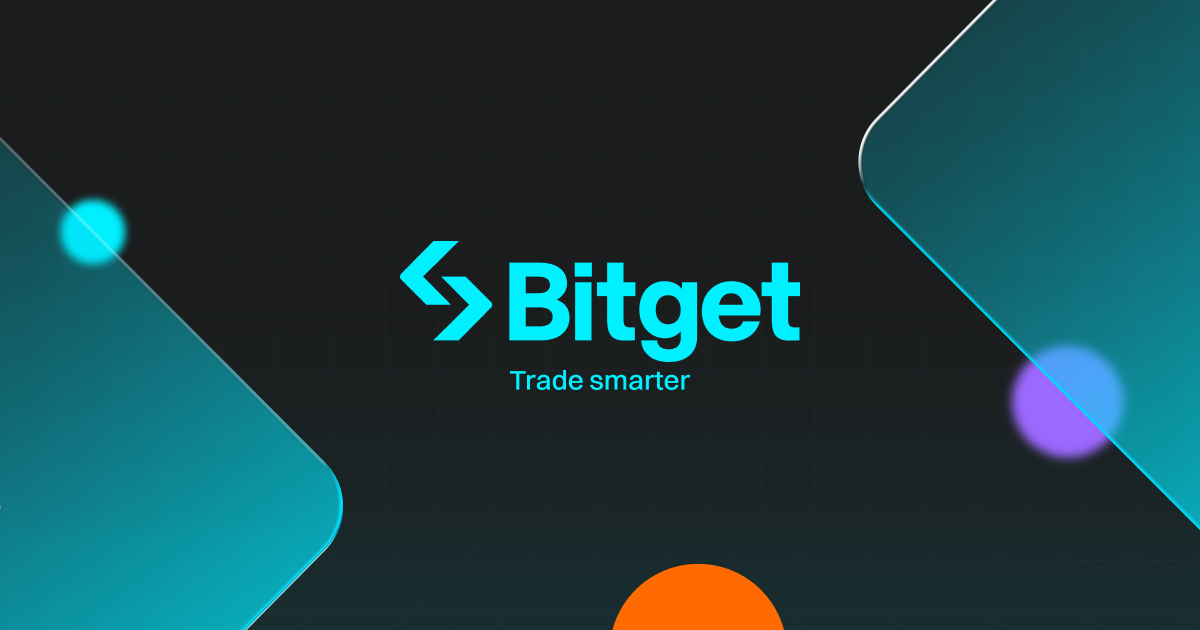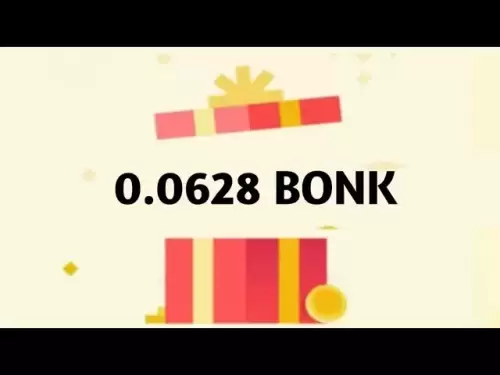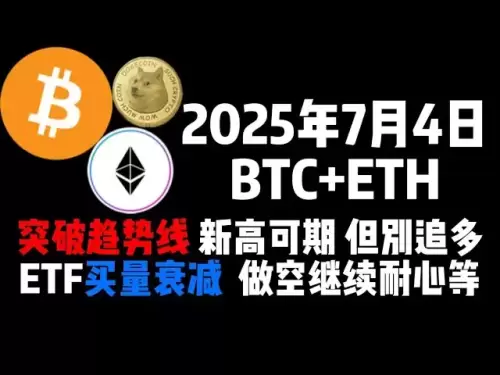-
 Bitcoin
Bitcoin $108,998.8231
-0.42% -
 Ethereum
Ethereum $2,559.8605
-1.50% -
 Tether USDt
Tether USDt $1.0003
-0.01% -
 XRP
XRP $2.2370
-1.61% -
 BNB
BNB $658.8428
-0.38% -
 Solana
Solana $152.5754
-1.83% -
 USDC
USDC $0.9999
0.00% -
 TRON
TRON $0.2860
0.80% -
 Dogecoin
Dogecoin $0.1686
-3.07% -
 Cardano
Cardano $0.5870
-2.98% -
 Hyperliquid
Hyperliquid $39.0016
-3.15% -
 Sui
Sui $2.9650
-0.78% -
 Bitcoin Cash
Bitcoin Cash $485.4220
-4.72% -
 Chainlink
Chainlink $13.4878
-2.34% -
 UNUS SED LEO
UNUS SED LEO $9.0360
0.33% -
 Avalanche
Avalanche $18.4749
-2.93% -
 Stellar
Stellar $0.2401
-1.50% -
 Toncoin
Toncoin $2.8110
-3.17% -
 Shiba Inu
Shiba Inu $0.0...01172
-3.08% -
 Litecoin
Litecoin $88.5225
-1.84% -
 Hedera
Hedera $0.1564
-2.10% -
 Monero
Monero $321.1304
-1.57% -
 Polkadot
Polkadot $3.4842
-4.14% -
 Dai
Dai $0.9999
-0.01% -
 Ethena USDe
Ethena USDe $1.0002
0.00% -
 Bitget Token
Bitget Token $4.4712
-3.14% -
 Uniswap
Uniswap $7.3446
-3.88% -
 Aave
Aave $273.8547
-2.64% -
 Pepe
Pepe $0.0...09782
-7.85% -
 Pi
Pi $0.4811
-3.65%
How to operate Bitget contract mobile phone
Traders can seamlessly access Bitget's user-friendly mobile app to trade a wide range of cryptocurrencies and derivatives, including perpetual contracts.
Nov 18, 2024 at 08:42 pm

How to Operate Bitget Contract on Mobile Phone
Bitget, a leading cryptocurrency exchange, offers a user-friendly mobile app that allows users to trade a wide range of cryptocurrencies and derivatives, including perpetual contracts. This guide will provide a step-by-step guide on how to operate Bitget contract on a mobile phone.
Step 1: Download and Install the Bitget App
a. Visit the Apple App Store for iOS devices or the Google Play Store for Android devices.
b. Search for the "Bitget" mobile app.
c. Click on the "Install" button to download and install the app.
Step 2: Create a Bitget Account (If you haven't already)
a. Once the app is installed, launch it and tap on the "Sign Up" button.
b. Enter your email address and create a strong password.
c. Complete the registration process by following the on-screen instructions.
Step 3: Activate Contract Trading
a. After creating an account, you need to activate contract trading. Tap on the "Derivatives" tab at the bottom of the app's main screen.
b. Locate the "Enable Contract Trading" button and tap on it.
c. Read the risk warning carefully and tap on the "Confirm" button.
Step 4: Fund Your Account
a. To start trading contracts, you need to fund your account with either cryptocurrencies or stablecoins.
b. Tap on the "Wallet" button and the "Deposit" button.
c. Choose the cryptocurrency you want to deposit and follow the on-screen instructions to complete the process.
Step 5: Choose a Contract
a. Once your account is funded, tap on the "Derivatives" tab and the "Contracts" option.
b. You can browse through the list of available contracts or use the filter to find a specific one.
c. Tap on the contract you want to trade to view more information and create an order.
Step 6: Create a Contract Order
a. On the contract details page, select the desired parameters for your order, including the order type (e.g., limit order, market order), the quantity and the entry price.
b. You can also set stop-loss and take-profit orders to manage your risk and potential profits.
c. Tap on the "Buy" or "Sell" button to place your order.
Step 7: Adjust or Close Your Order (Optional)
a. Once you have placed an order, you can monitor its progress by navigating to the "Orders" section in the "Derivatives" tab.
b. Here, you can view the status of your order, adjust its parameters, or close it completely if desired.
Step 8: Withdraw Earnings
a. Once you have successfully traded contracts and realized profits, you can withdraw your earnings by going to the "Wallet" section of the app.
b. Choose the "Withdraw" option and follow the on-screen instructions to complete the process.
Disclaimer:info@kdj.com
The information provided is not trading advice. kdj.com does not assume any responsibility for any investments made based on the information provided in this article. Cryptocurrencies are highly volatile and it is highly recommended that you invest with caution after thorough research!
If you believe that the content used on this website infringes your copyright, please contact us immediately (info@kdj.com) and we will delete it promptly.
- Cryptos, Jerome Powell, and Recession: Decoding the Latest Market Moves
- 2025-07-04 14:30:12
- Tokenization Heats Up: Ondo, Pantera, and the $250M RWA Revolution
- 2025-07-04 14:30:12
- BONK Price Prediction: Meme Coin Mania and What's Next?
- 2025-07-04 12:30:13
- NYAG, Stablecoins, and FDIC Protections: Navigating the Regulatory Maze
- 2025-07-04 13:10:15
- Level Up Your DeFi Game: Phantom Wallet and the Ultimate DeFi Experience
- 2025-07-04 13:10:15
- Bitcoin Surge: Breaking Down the $109,000 Barrier and the Road to $165,000?
- 2025-07-04 12:30:13
Related knowledge

How to identify the contract value range in combination with the market profile?
Jul 02,2025 at 10:56pm
Understanding the Market ProfileTo effectively identify the contract value range in combination with the market profile, it's essential to first understand what each concept entails. The market profile is a framework that helps traders visualize how price and time interact across a given period, typically a trading day or session. It provides insights i...

How to use the price slope to filter the false breakthrough signal of the contract?
Jun 20,2025 at 06:56pm
Understanding the Concept of Price Slope in Contract TradingIn contract trading, especially within cryptocurrency derivatives markets, price slope refers to the rate at which the price changes over a specific time period. It helps traders assess the strength and sustainability of a trend. A steep slope may indicate strong momentum, while a shallow slope...

How to determine the expected volatility of the contract through the volatility cone?
Jun 19,2025 at 12:28pm
Understanding the Basics of Volatility in Cryptocurrency ContractsIn the realm of cryptocurrency trading, volatility is a key metric that traders use to assess potential risk and reward. When dealing with futures contracts, understanding how volatile an asset might become over time is crucial for position sizing, risk management, and strategy developmen...

How to formulate a contract intraday trading plan in combination with the pivot point system?
Jun 21,2025 at 03:42pm
Understanding the Basics of Pivot Points in Cryptocurrency TradingPivot points are technical analysis tools used by traders to identify potential support and resistance levels. These levels are calculated using the previous day's high, low, and closing prices. In the context of cryptocurrency trading, where markets operate 24/7, pivot points help trader...

How to adjust the contract position ratio through the price fluctuation entropy?
Jun 22,2025 at 11:42am
Understanding Price Fluctuation Entropy in Cryptocurrency ContractsIn the world of cryptocurrency futures trading, price fluctuation entropy is a relatively new concept used to measure market volatility and uncertainty. It derives from information theory, where entropy refers to the degree of randomness or unpredictability in a system. In crypto contrac...

How to use the volume swing indicator to predict the contract volume-price divergence?
Jun 18,2025 at 11:42pm
Understanding the Volume Swing IndicatorThe volume swing indicator is a technical analysis tool used primarily in cryptocurrency trading to evaluate changes in volume over time. Unlike price-based indicators, this metric focuses solely on trading volume, which can provide early signals about potential market reversals or continuations. The key idea behi...

How to identify the contract value range in combination with the market profile?
Jul 02,2025 at 10:56pm
Understanding the Market ProfileTo effectively identify the contract value range in combination with the market profile, it's essential to first understand what each concept entails. The market profile is a framework that helps traders visualize how price and time interact across a given period, typically a trading day or session. It provides insights i...

How to use the price slope to filter the false breakthrough signal of the contract?
Jun 20,2025 at 06:56pm
Understanding the Concept of Price Slope in Contract TradingIn contract trading, especially within cryptocurrency derivatives markets, price slope refers to the rate at which the price changes over a specific time period. It helps traders assess the strength and sustainability of a trend. A steep slope may indicate strong momentum, while a shallow slope...

How to determine the expected volatility of the contract through the volatility cone?
Jun 19,2025 at 12:28pm
Understanding the Basics of Volatility in Cryptocurrency ContractsIn the realm of cryptocurrency trading, volatility is a key metric that traders use to assess potential risk and reward. When dealing with futures contracts, understanding how volatile an asset might become over time is crucial for position sizing, risk management, and strategy developmen...

How to formulate a contract intraday trading plan in combination with the pivot point system?
Jun 21,2025 at 03:42pm
Understanding the Basics of Pivot Points in Cryptocurrency TradingPivot points are technical analysis tools used by traders to identify potential support and resistance levels. These levels are calculated using the previous day's high, low, and closing prices. In the context of cryptocurrency trading, where markets operate 24/7, pivot points help trader...

How to adjust the contract position ratio through the price fluctuation entropy?
Jun 22,2025 at 11:42am
Understanding Price Fluctuation Entropy in Cryptocurrency ContractsIn the world of cryptocurrency futures trading, price fluctuation entropy is a relatively new concept used to measure market volatility and uncertainty. It derives from information theory, where entropy refers to the degree of randomness or unpredictability in a system. In crypto contrac...

How to use the volume swing indicator to predict the contract volume-price divergence?
Jun 18,2025 at 11:42pm
Understanding the Volume Swing IndicatorThe volume swing indicator is a technical analysis tool used primarily in cryptocurrency trading to evaluate changes in volume over time. Unlike price-based indicators, this metric focuses solely on trading volume, which can provide early signals about potential market reversals or continuations. The key idea behi...
See all articles

























































































